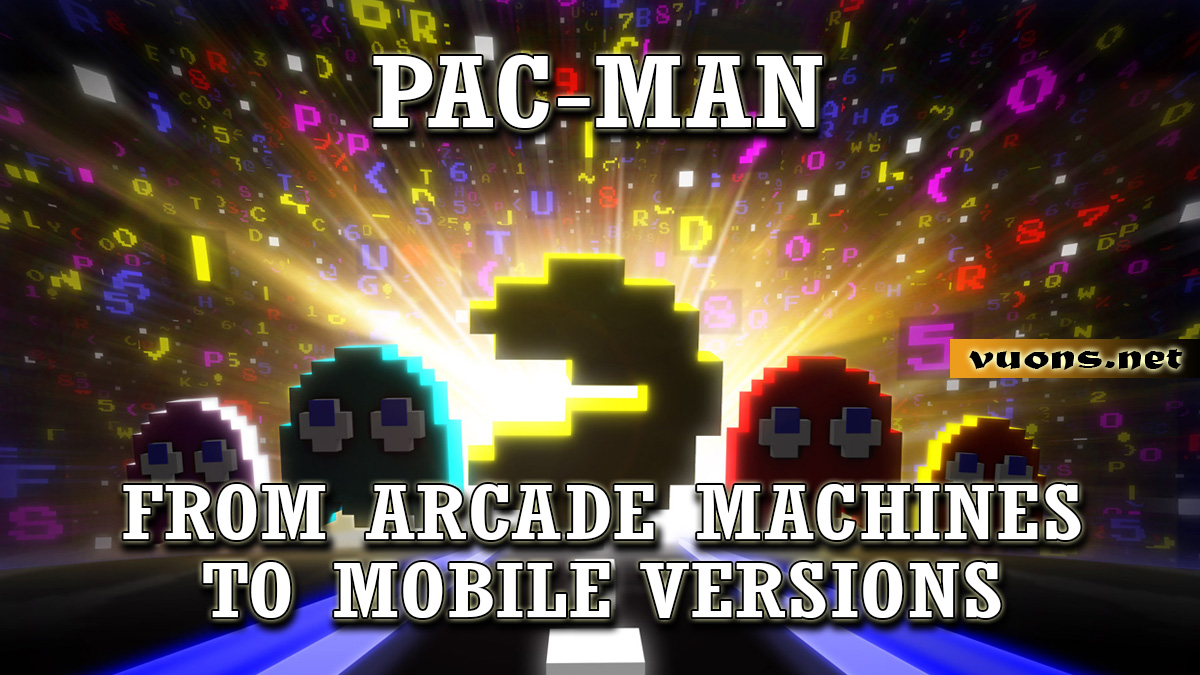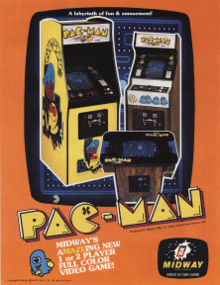From Pixels to Reality: Pac-Man in the Modern World
A Brief History of Pac-Man: From Idea to Icon
In 1980, Namco released a game that would become one of the greatest icons in video game history: Pac-Man. Designed by Toru Iwatani, Pac-Man was originally intended to appeal to female players, who at the time rarely played video games. Iwatani wanted to create a game that did not focus on violence, like most arcade games of its time, but instead emphasized fun and strategy.
Pac-Man soon became a global phenomenon. Its simple yet challenging gameplay, in which players have to guide an incomplete pizza-shaped character through a maze, avoiding ghosts, and eating small dots and fruit, managed to capture the attention of millions of people. Pac-Man’s popularity spawned numerous adaptations, including sequels, TV series, merchandise, and even a popular song.
Apart from that, Pac-Man is the first game to feature characters with different personalities, namely Blinky, Pinky, Inky, and Clyde. Each ghost has a unique movement pattern, adding a deeper strategic element to the gameplay.
The success of Pac-Man not only established Namco as a giant in the gaming industry, but also paved the way for the maze chase game genre. To this day, Pac-Man remains relevant, with continued adaptation and innovation across modern platforms.
With its immense influence and timeless appeal, Pac-Man has established itself as a popular culture icon and pioneer in the world of video games. To better understand the journey and evolution of this legendary game, we can look at A Short History of Pac-Man: From Idea to Icon as an interesting starting point.
The Evolution of Pac-Man Design: From Classic Pixels to Modern Graphics
When Pac-Man was first launched by Namco in 1980, the visual design was very simple but iconic. The main character, Pac-Man, is depicted as a yellow circle with a “mouth” shaped like a simple pizza slice. These designs are easily recognized and immediately embedded in popular culture.
Over the years, Pac-Man’s design has undergone various changes and improvements as technology and graphics have developed in the gaming industry. In the 8-bit and 16-bit eras, Pac-Man retained its classic pixelated form, but with added detail and richer colors. Games such as “Ms. Pac-Man” and “Pac-Mania” show variations in maze and character design, without losing the essence of the original.
Entering the 3D era in the 1990s and early 2000s, Pac-Man began to be adapted into a three-dimensional format. Games like “Pac-Man World” introduced Pac-Man in a more dynamic and lively form, complete with animations and interactive 3D environments. The character and world designs in this game are more complex, offering players a more immersive visual experience.
In the modern era, Pac-Man continues to evolve with the presence of advanced graphic technology and mobile platforms. Games like “Pac-Man Championship Edition” and “Pac-Man 256” show how classic designs can be integrated with modern visual effects, dynamic lighting and faster, more intense gameplay. Pac-Man’s design became more subtle and colorful, but still retained the characteristics that made him so recognizable.
The transformation of Pac-Man’s design from simple pixelated shapes to sophisticated modern graphics reflects technological developments in the gaming industry while demonstrating Pac-Man’s ability to adapt and remain relevant across generations. For fans old and new, Pac-Man Design Evolution: From Classic Pixels to Modern Graphics is a true testament to the character’s enduring appeal in the world of video games.
Merchandise and Media: Pac-Man Outside the Gaming World
Since its release in 1980 by Namco, Pac-Man has become more than just a video game. This ever-hungry yellow character has penetrated various aspects of popular culture through various forms of merchandise and media, cementing his status as a global icon.
Pac-Man first appeared in the world of arcade games, but its success soon spread to various merchandise products. Pac-Man-themed t-shirts, hats, posters, toys, and even household items have become very popular. Not only for children, Pac-Man merchandise also attracts the attention of collectors and adult fans who want to immortalize their childhood nostalgia.
Pac-Man also made its mark on other media. In 1982, the “Pac-Man” cartoon series was produced by Hanna-Barbera, which featured the Pac-Man character and his family on various ghost-fighting adventures. The series expands the story behind the simple character and introduces Pac-Man to a wider audience, including those who may not play video games.
Additionally, Pac-Man frequently appears in pop culture references, such as in films, TV shows, and even music. For example, the film “Pixels” (2015) features Pac-Man as one of the main characters in a storyline that combines various classic games. The song “Pac-Man Fever” by Buckner & Garcia, released in 1981, also shows how influential the game was in popular culture.
Pac-Man not only endures as a video game icon, but also continues to be relevant through adaptation and innovation in various forms of media and merchandise. For those interested in further exploring how Pac-Man crosses the boundaries of the gaming world, Merchandise and Media: Pac-Man Beyond the Gaming World offers a fascinating insight into the character’s journey to becoming a global phenomenon.




